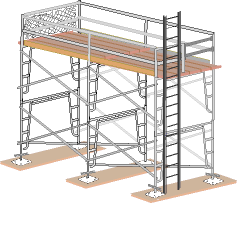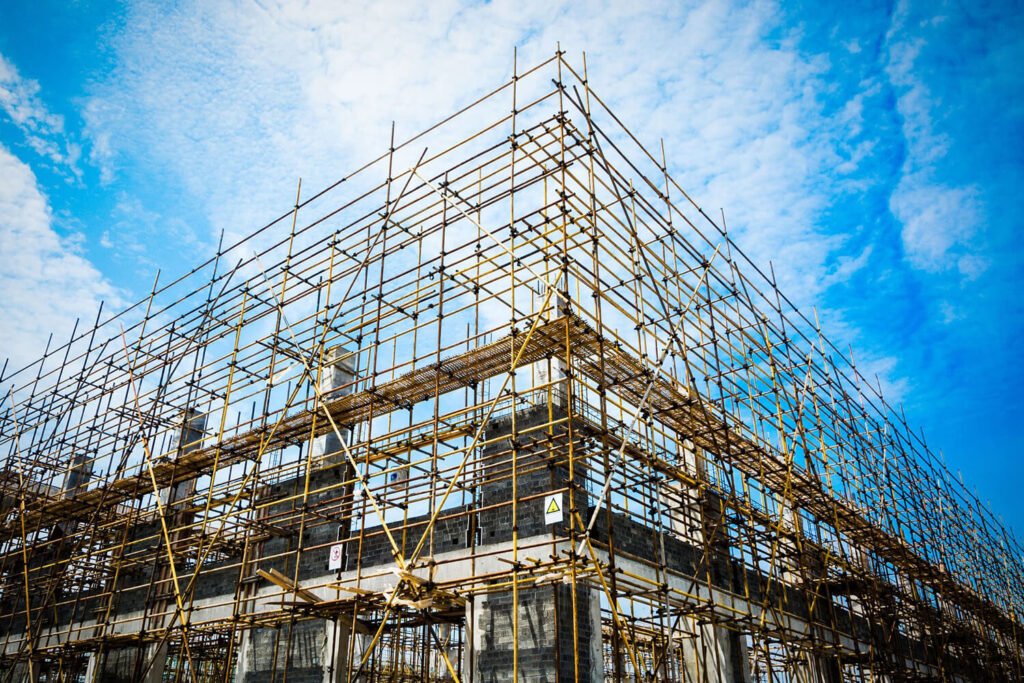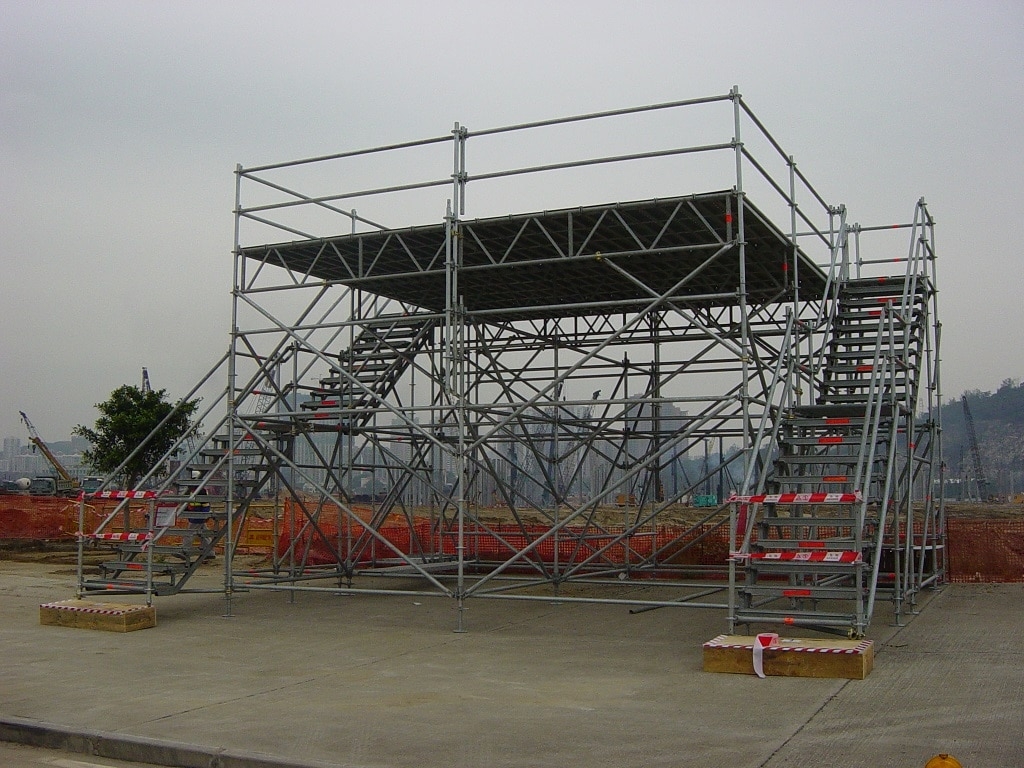Secure and Efficient Scaffolding in Surrey for Any Construction Task
Secure and Efficient Scaffolding in Surrey for Any Construction Task
Blog Article
Checking Out the Various Kinds Of Scaffolding Utilized in Building Jobs
The building sector depends heavily on different kinds of scaffolding to meet specific task needs, each offering distinctive benefits and applications. Standard structure scaffolding provides a strong foundation for basic jobs, while suspended scaffolding is important for deal with high-rise structures. Various other choices, such as system and rolling scaffolding, accommodate effectiveness and wheelchair, respectively. The cantilever variant confirms vital in urban settings where space is constrained. Understanding the subtleties of these scaffolding kinds is essential for maximizing security and performance on building and construction sites, triggering a more detailed exam of their one-of-a-kind characteristics and applications.

Conventional Structure Scaffolding
Standard frame scaffolding is one of one of the most widely used approaches in the building and construction market because of its effectiveness and versatility. This system contains horizontal and upright frameworks that are assembled to create a secure system for products and employees. The main elements consist of upright messages, horizontal ledgers, and angled dental braces, which together offer a solid framework that can sustain significant loads.
One of the crucial benefits of typical frame scaffolding is its flexibility to numerous building and construction tasks, varying from residential buildings to big commercial structures. The modular layout permits very easy setting up and disassembly, making it efficient for both short-term and long-term tasks. In addition, the system can be customized in height and size, accommodating different structure styles and website problems.
Safety and security is vital in scaffolding applications, and typical structure systems are equipped with guardrails and toe boards to prevent drops and ensure worker defense. Routine assessments and adherence to safety and security regulations are crucial in preserving the honesty of the scaffold (Scaffolding). Generally, traditional structure scaffolding continues to be a fundamental choice in the building industry, providing a trusted platform for labor and boosting overall task effectiveness

Suspended Scaffolding
Suspended scaffolding supplies an unique option for building and construction tasks that need accessibility to elevated surfaces, especially in situations where standard framework scaffolding may be unwise. This kind of scaffolding is normally suspended from the roofing system or top degrees of a structure, using a system of ropes, platforms, and pulley-blocks to create a working space that can be gotten used to various heights.
Among the primary benefits of suspended scaffolding is its adaptability. It can be easily rearranged or decreased to accommodate changes in building and construction needs, making it excellent for jobs such as window installation, frontage job, and maintenance on high-rise structures. Additionally, the marginal impact of put on hold scaffolding enables much better use ground room in city atmospheres, where space is often restricted.
Safety and security is a critical factor to consider in making use of put on hold scaffolding. Appropriate rigging and anchoring systems need to be utilized to make certain stability and prevent mishaps. Operators has to additionally be learnt the risk-free usage of this tools. In general, suspended scaffolding offers a reliable and efficient option for accessing hard-to-reach locations in various building and construction situations, improving both efficiency and safety and security on website.
System Scaffolding
System scaffolding, usually regarded as a modern-day remedy in the scaffolding industry, includes pre-engineered components that can be quickly put together and adjusted for different building tasks. Scaffolding. This kind of scaffolding is characterized by its modular design, which enables versatility and performance on task websites, suiting different heights and architectural demands
Usually made from high-strength steel or light weight aluminum, system scaffolding supplies improved toughness and security. The elements consist of vertical messages, straight ledgers, and diagonal braces, which adjoin securely, ensuring a robust framework. The style usually integrates standardized fittings, streamlining assembly and disassembly processes, thereby minimizing labor time and prices.

Rolling Scaffolding
Rolling scaffolding is a functional choice to traditional fixed scaffolding, designed for flexibility and convenience of use on building websites. This kind of scaffolding consists of a system sustained by frames with wheels, permitting employees to easily relocate it as required. The flexibility attribute dramatically enhances productivity, as it minimizes downtime connected with assembling and taking apart dealt with scaffolding.
Usually created from lightweight materials such as aluminum or steel, rolling scaffolding supplies a strong yet portable remedy for jobs calling for regular repositioning - Scaffolding. It is particularly helpful in jobs such as paint, drywall installation, and electric work, where accessibility to various heights and areas is essential
Security is vital in rolling scaffolding design, with attributes such as locking wheels to avoid unplanned motion when in operation, and guardrails to secure employees from falls. Furthermore, lots of designs are flexible in elevation, accommodating numerous job demands.
Cantilever Scaffolding

The design of cantilever scaffolding normally entails using brackets or arms secured to a structure or structure, making it possible for the platform to prolong outward safely. Security is critical; hence, these scaffolds need to be engineered to endure different Scaffolding tons and environmental conditions. Normal examination and upkeep are necessary to make certain structural honesty and employee safety and security.
Cantilever scaffolding is preferred for its flexibility and efficient use of space, making it a preferred selection in urban settings where room constraints prevail. Furthermore, it assists in much easier accessibility to high elevations, inevitably adding to the total efficiency of building and construction projects. As with all scaffolding kinds, appropriate training and adherence to safety and security criteria are critical for workers using cantilever scaffolding.
Conclusion
Finally, the varied kinds of scaffolding utilized in building and construction tasks each serve distinctive purposes customized to certain site requirements. Typical structure scaffolding gives security, while put on hold scaffolding offers convenience for raised jobs. System scaffolding promotes quick assembly, and rolling scaffolding boosts movement for differing workplace. Cantilever scaffolding successfully resolves obstacles in city setups. Understanding these scaffolding types is vital for enhancing security and efficiency in building, eventually adding to the effective completion of tasks.
Conventional framework scaffolding supplies a sturdy structure for basic jobs, while suspended scaffolding is essential for job on high-rise structures.Rolling scaffolding is a versatile choice to standard fixed scaffolding, created for flexibility and ease of usage on construction websites. As with all scaffolding types, proper training and adherence to safety criteria are vital for workers making use of cantilever scaffolding.
Traditional framework scaffolding supplies stability, while put on hold scaffolding uses flexibility for raised tasks. System scaffolding helps with fast assembly, and rolling scaffolding boosts flexibility for differing job atmospheres.
Report this page